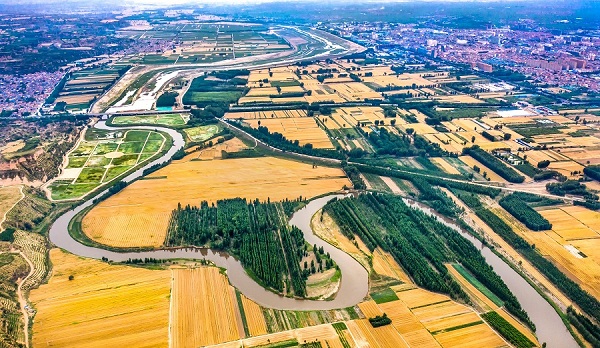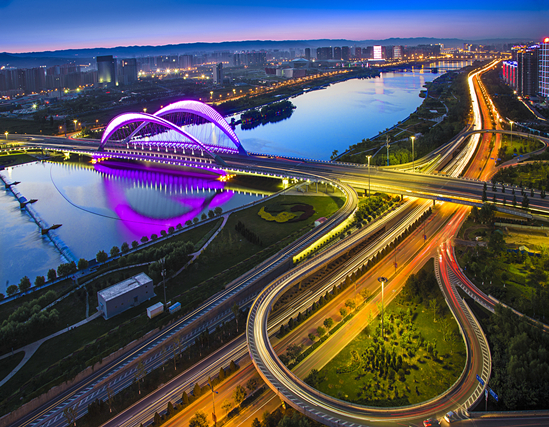Yellow River cleanup brings bright future
Updated: 2020-09-24

The Fenhe River, the Yellow River's second-largest tributary, meanders through farmland in North China's Shanxi province. XUE JUN/YUNCHENG EVENING NEWS
Zhang Qinglin, a resident of Ronghe town, Wanrong county, Shanxi province, visits the Fenhe River, a couple of kilometers from his home, every other day.
The 75-year-old enjoys watching the river meander through wetland before it joins the Yellow River, China's second-longest waterway.
"There was a time when the Fenhe's water quality had deteriorated. It was like the river you had been living on for generations had got sick. Now, though, the extensive wetland is helping to make the water clean and reduce flooding," he said.
Running through 27 counties and districts in Shanxi, the 716-km-long Fenhe is the Yellow River's second-largest tributary.
President Xi Jinping has stressed the importance of the ecological protection work on the Fenhe. He said the work must be undertaken in practical ways to ensure that clean water flows into the Yellow River, which flows for 5,464 km through seven provinces and two autonomous regions. The river basin has a drainage area of more than 752,000 square kilometers.
In 2018, residents of the provinces and regions through which the Yellow River flows accounted for 30.3 percent of China's population, while their GDP accounted for 26.5 percent of the national total.
"The protection of the Yellow River is critical to the great rejuvenation and sustainable development of the Chinese nation," Xi said last year.
An Aug 31 meeting of the Politburo of the Communist Party of China Central Committee, presided over by Xi, stressed that efforts should be made to improve the environment of the Yellow River Basin.
The measures should optimize the allocation of water resources, facilitate high-quality development of the whole basin, improve people's lives and promote the inheritance of Yellow River culture.
"Provinces and regions along the river will take targeted measures according to local circumstances to protect the environment in the Yellow River Basin," said Li Bin, secretary-general of the Chinese People's Political Consultative Conference, the top advisory body.
She made the comments at a symposium on the protection and high-quality development of the river, held in Lanzhou, Gansu province, early this month.
For provinces on the river's upper reaches, including Qinghai and Gansu, the priority must be to protect and restore the ecosystems of lakes, glaciers, wetland and grassland to conserve water for the basin, she said.
She noted that people who live along the middle reaches must make efforts to reduce water and soil loss, and control the discharge of pollutants into the river.
Provinces on the lower reaches must emphasize prevention of natural disasters, build sound ecosystems for wetland and rivers, and strengthen control of pollution sources, both industrial and domestic, she added.



